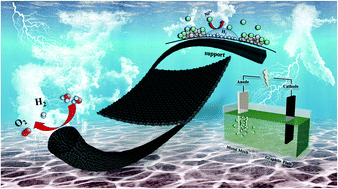In-site hydrogen bubble template method to prepare Ni coated metal meshes as effective bi-functional electrodes for water splitting†
Abstract
Metal substrates are frequently used as current collectors and supports for electrochemically active materials, but their effect on the physical and electrochemical performance of electrocatalysts is rarely investigated. In this study, the electrodeposition method was used to coat four different metal meshes with three-dimensional nickel porous structures using hydrogen bubbles as a template. The significant influence of the metal substrates on the morphology of deposited nickel was demonstrated. 3D porous structures formed on nickel, iron, copper, and titanium meshes via the hydrogen bubble template method varied significantly. It was found that differences in the physical adsorption of hydrogen and electrochemical hydrogen evolution on metal substrates are the fundamental reasons behind the diverse morphology of the coatings. Lattice matching of the substrate and the active material also plays an important role during the electrodeposition process. Electrocatalytic performance of the newly prepared materials in water electrolysis was evaluated using the hydrogen and oxygen evolution reactions (HER and OER). The results demonstrate the high electrocatalytic activity of Ni/FeM in the OER and HER, and the good stability of Ni/TiM in HER.



 Please wait while we load your content...
Please wait while we load your content...